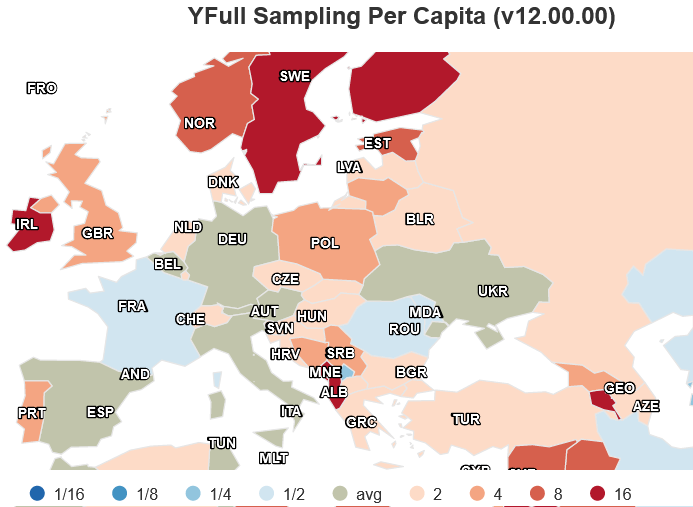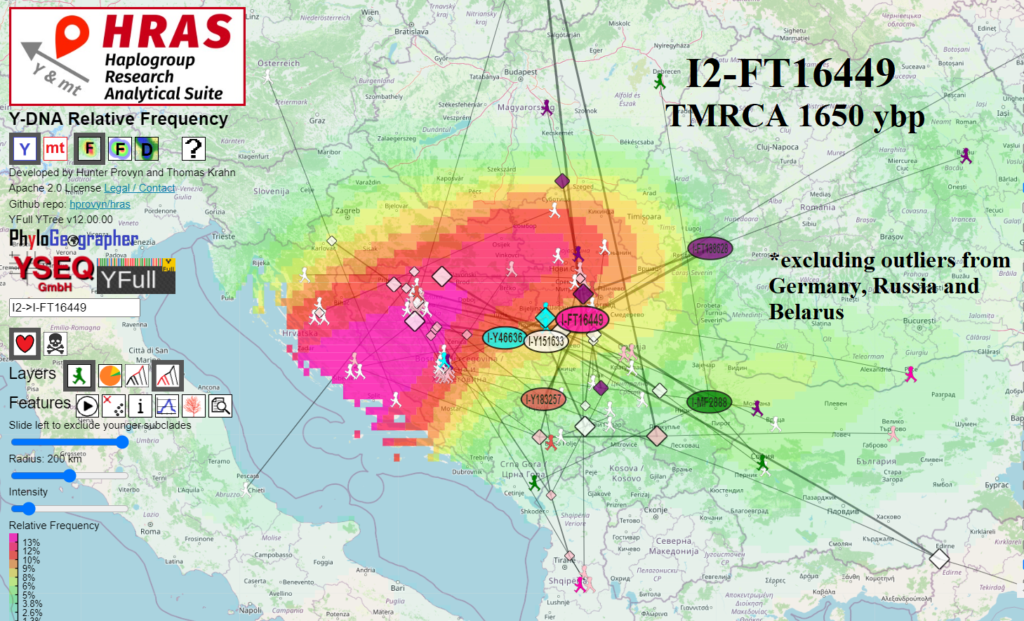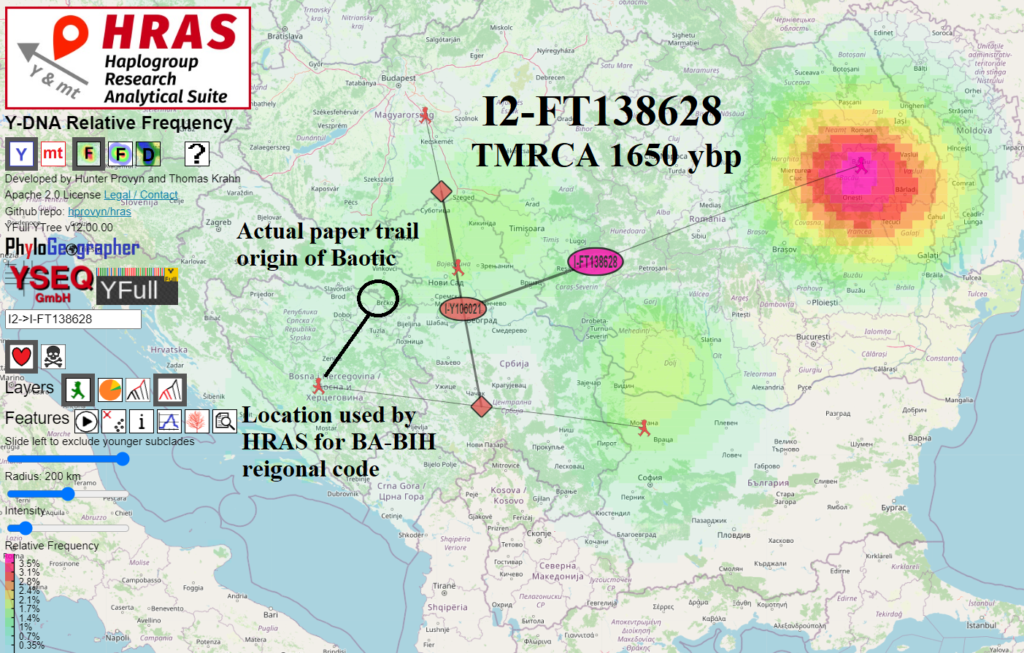I wrote this research article on behalf of one of my Patreon patrons. As such, a link to it may be found from HRAS if someone views this or related haplogroups and clicks the “Research” button.
Background: Iron Age I2-Y3120
The ancestor of this and related lines, I2-Y3120, sired a large number of lineages around 2200-2400 years ago (YFull and FTDNA estimates, in that order).
Ancient DNA from around the time of origin has not yet been recovered and I believe the consensus is that the ancestors had been living somewhere in the Carpathian Mountains or peripheral areas.
An article from December 2023 would appear to be highly relevant but it is behind a paywall and I don’t have money to pay these institutions to read it.
“A genetic history of the Balkans from Roman frontier to Slavic migrations”
https://doi.org/10.1016/j.cell.2023.10.018
While the link to later migrations of Slavic-speaking people to the Balkans is obvious for many of the later lineages (and perhaps definitively proven by the 2023 article for some lineages), based on the age and geographic distribution of child lineages of I2-Y3120, I consider the haplogroup to be a candidate we might also expect to find represented in the already discovered burials of Dacian kings in Romania, if the samples were to be tested.

Romania is one of the most undersampled regions of Europe, with a total of 117 samples on the YFull YTree.
Late Antiquity Central Balkans / Carpathian (South Slavic) I2-FT16449
Except for a few outliers found in Germany, Belarus and Russia, most of I2-FT16449, who descend from a man who lived about 1650 years ago, are now living in the Central Balkans.

While HRAS shows the center of geographic diversity as Serbia, there are no ancient samples proving that the single ancestor was born there. So this man may have originally proliferated elsewhere (i.e. Carpathian Mountains), and all/most lineages surviving today happen to have migrated to the Central Balkans as part of the Slavic migrations.
The Danube had always been a migration route, so during the time of the Roman Empire, it was also used by successive waves of conquerors / raiders. There were groups that came before the Slavs and those that came after. However the Slavs retained their language while the identities of most of the other groups melted / had melted away. For new details about this historical migration that have been proven by genetics, I refer you to the 2023 article linked above, “A genetic history of the Balkans from Roman frontier to Slavic migrations”.
My particular male line of J2b-L283 was one of the lines that had been living in Serbia since the Bronze Age and now we make up a small fraction there. I think we wait for more ancient samples to be found to know more precisely which events led to our having left this area. I think the consensus is that the Central Balkans was not populated very heavily at the time of the mass migration of Slavs. So my own male line ancestors’ relatives had mostly already migrated somewhere else by that time (i.e. in service of the Roman Army to defend other borders) and the ones who were still there were weakened after years of invasions, the Justinian Plague and some earthquakes. If each subsequent invasion reduced the indigenous male lines by 10-20%, it can quickly approach the single digits.
Late Antiquity Central Balkans / Carpathian (South Slavic) I2-FT138628
The following map shows the locations where all I2-FT138628 men trace their male line origins. Note that the algorithm’s computed origin for I2-FT138628 as between Serbia and Romania should not be considered reliable, due to the lack of samples and also due to the aforementioned reasoning – a mass migration to a particular location results in a similar distribution as a haplogroup having actually originated in that place.

For historical context, I recommend John Fine’s “The Early Medieval Balkans”.
These posts are the opinion of Hunter Provyn, a haplogroup researcher in J-M241 and J-M102.